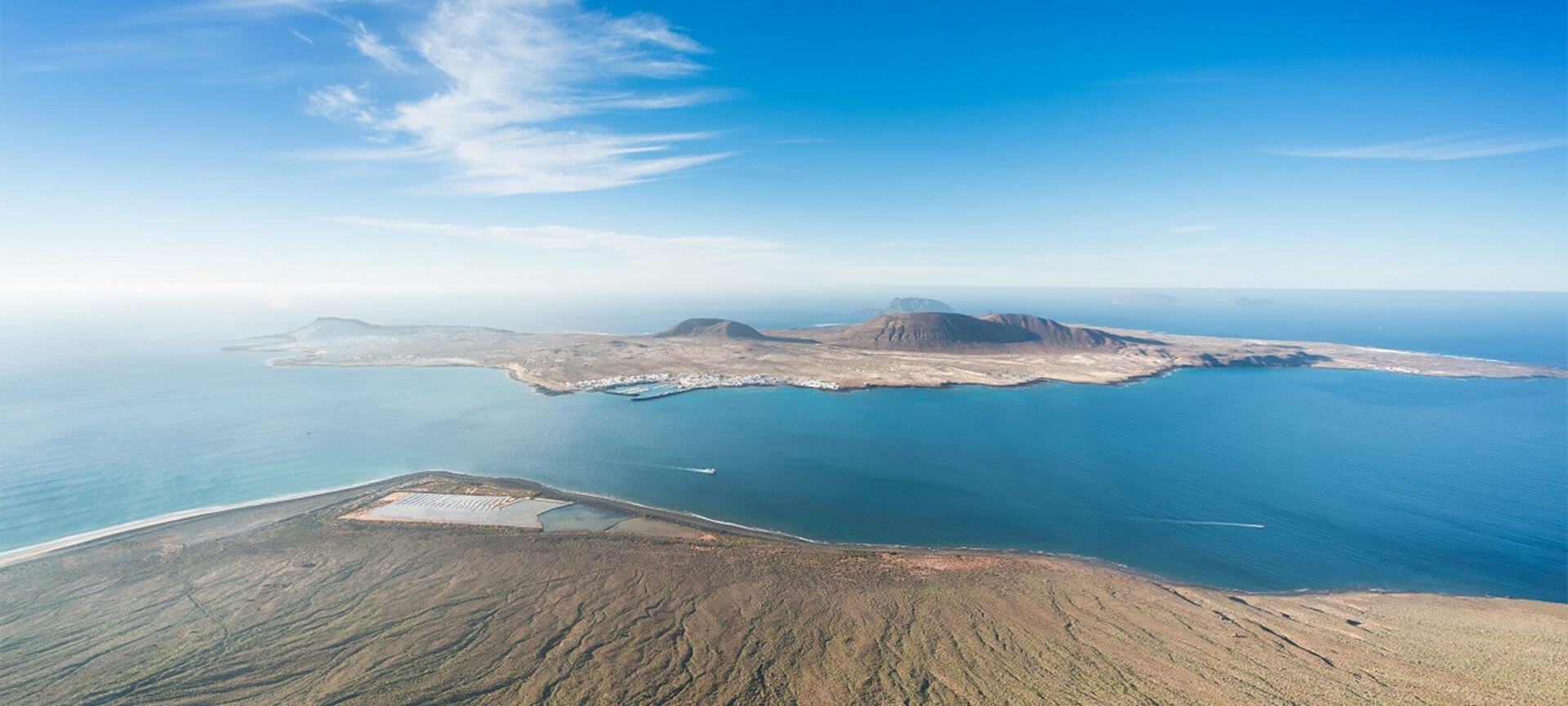
Lanzarote Biosphere Reserve

Volcanic paradise
The perfect integration of its tourist infrastructure into the natural environment makes Lanzarote a world reference as a model of sustainable development.
Lanzarote, the easternmost of the Canary Islands, is characterised by a unique volcanic landscape with surprising geological formations. However, far from appearing bleak, it is a beautiful example of a volcanic ecosystem, which has allowed the island to be declared a Biosphere Reserve. If there's one thing that defines Lanzarote, it's its unique landscape of lava and volcanic ash, the result of the various volcanic eruptions that occurred on the island between the 18th and 19th centuries.From north to south, the island offers a wide variety of landscapes, from the lush landscapes of Haría to the vineyards of La Geria. And on the coast, beautiful beaches such as Papagayo and Famara contrast with rocky cliffs and volcanic formations such as Los Hervideros or El Golfo. The greatest seismic activity was recorded in the Timanfaya National Park, a true showcase of the island's ecosystem. This space encompasses an immense sea of solidified lava in which curious geological formations emerge, such as caves, cones and craters. This unique landscape hides a wide variety of plants, with lichens, reeds and shrubs such as mallow, sea purslane, saltwort and mouse plant.Lanzarote preserves other natural spaces of great importance: The Volcanoes Natural Park, which surrounds Timanfaya and the Chinijo Archipelago Natural Park, a marine ecosystem that includes islets of great beauty and interest due to the bird species that inhabit them. The perfect integration of its tourist infrastructure into the natural environment makes Lanzarote a world leader as a model for sustainable development. This fact, combined with the excellent state of its natural heritage, led to the island being declared a Biosphere Reserve in 1993.
Lanzarote Biosphere Reserve
Lanzarote (Canary Islands)
Activa JS
What you need to know
-
Cultural information
The island has some towns of interest. In addition to Arrecife, the capital, there are notable towns such as Teguise, San Bartolomé and Tinajo. The Lanzarote coastline is dotted with beautiful beaches and important tourist centres, such as Costa Teguise, Playa Blanca and Puerto del Carmen. Another attraction that the island offers is the set of spaces designed by the Lanzarote architect César Manrique, among which are the Jameos del Agua, the Cactus Garden and the foundation that bears his name .
-
Environmental information
The volcanic nature of Lanzarote gives rise to a great biodiversity. In Timanfaya alone, 180 different plant species have been counted. With regard to the wildlife, you can find native species, such as the Haría lizard and the rough gecko or Majorero gecko.
-
Information for visits
Lanzarote is well connected by air and sea. From the airport, located in Arrecife, daily flights connect the island with the Iberian Peninsula, as well as with Gran Canaria and Tenerife. It is also connected by boat to the main islands of the archipelago.
Travel plans for inspiring you



